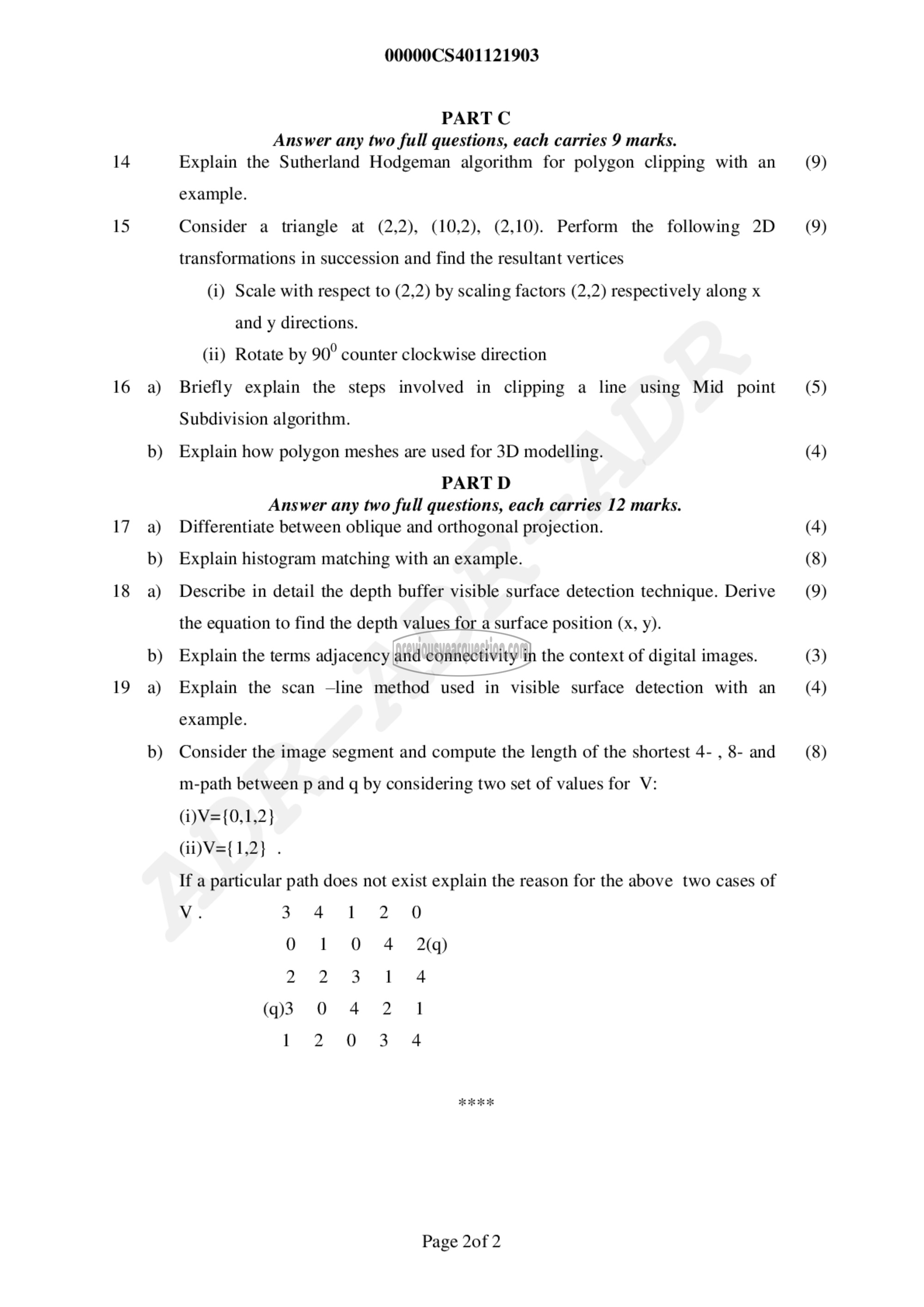APJ ABDUL KALAM TECHNOLOGICAL UNIVERSITY Previous Years Question Paper & Answer
Semester : SEMESTER 7
Subject : Computer Graphics
Year : 2020
Term : SEPTEMBER
Branch : COMPUTER SCIENCE AND ENGINEERING
Scheme : 2015 Full Time
Course Code : CS 401
Page:2
14
15
16
17
18
19
a)
b)
a)
b)
a)
b)
a)
b)
00000CS 401121903
PART C
Answer any two full questions, each carries 9 marks.
Explain the Sutherland Hodgeman algorithm for polygon clipping with an
example.
Consider a triangle at (2,2), (10,2), (2,10). Perform the following 2D
transformations in succession and find the resultant vertices
(i) Scale with respect to (2,2) by scaling factors (2,2) respectively along x
and y directions.
(ii) Rotate by 90° counter clockwise direction
Briefly explain the steps involved in clipping a line using Mid point
Subdivision algorithm.
Explain how polygon meshes are used for 3D modelling.
PART D
Answer any two full questions, each carries 12 marks.
Differentiate between oblique and orthogonal projection.
Explain histogram matching with an example.
Describe in detail the depth buffer visible surface detection technique. Derive
the equation to find the depth values for a surface position (x, y).
Explain the terms adjacency and connectivity in the context of digital images.
Explain the scan —line method used in visible surface detection with an
example.
Consider the image segment and compute the length of the shortest 4- , 8- and
m-path between p and q by considering two set of values for V:
(i) V={0,1,2}
(ii) V={1,2} .
If a particular path does not exist explain the reason for the above two cases of
Vv. 3 4 1 2 0
0 1 0 4 20
223 1 4
(03 0 4 2 1
1 2 0 3 4
Page 2of 2
(9)
(9)
(5)
(4)
(4)
(8)
(9)
(3)
(4)
(8)
